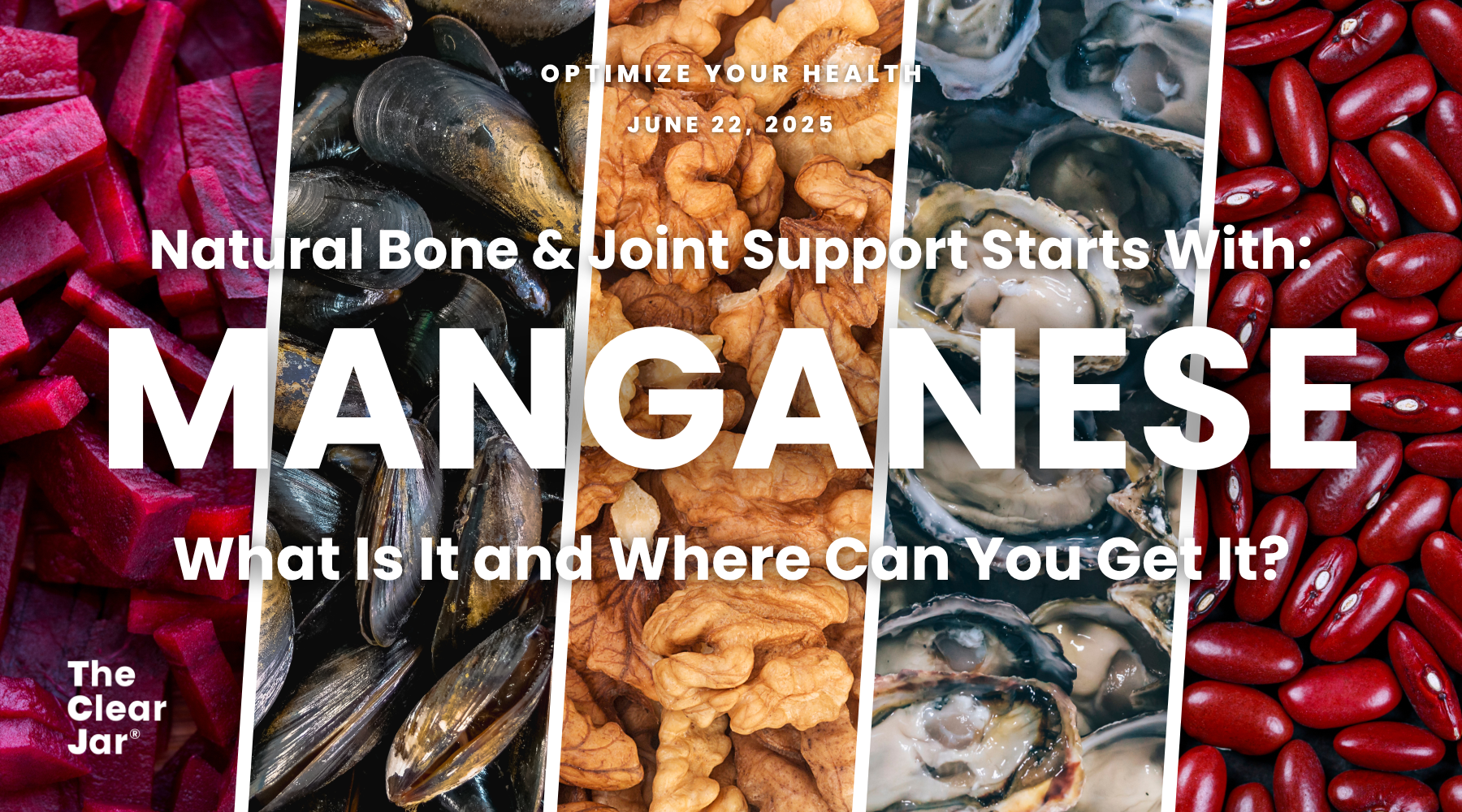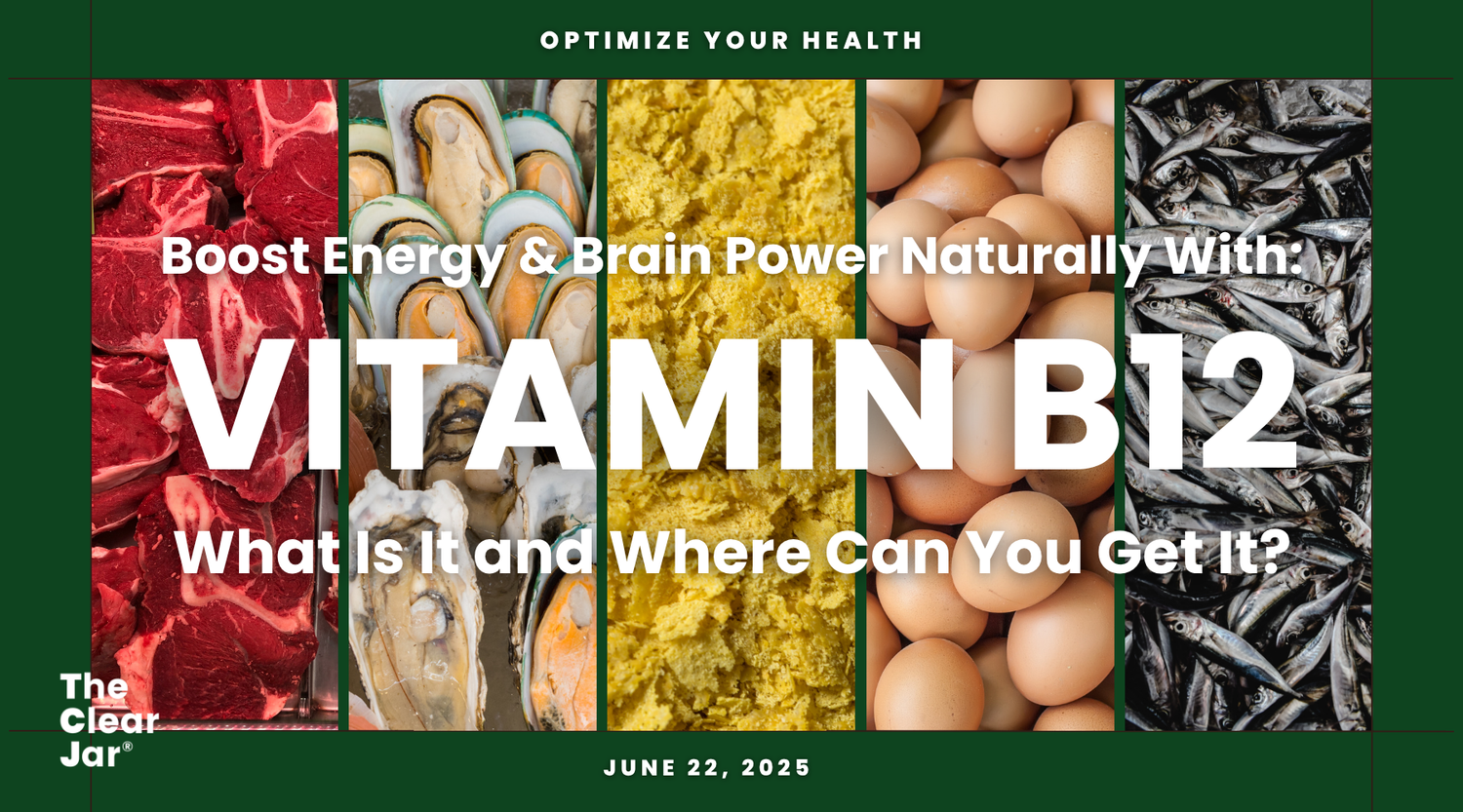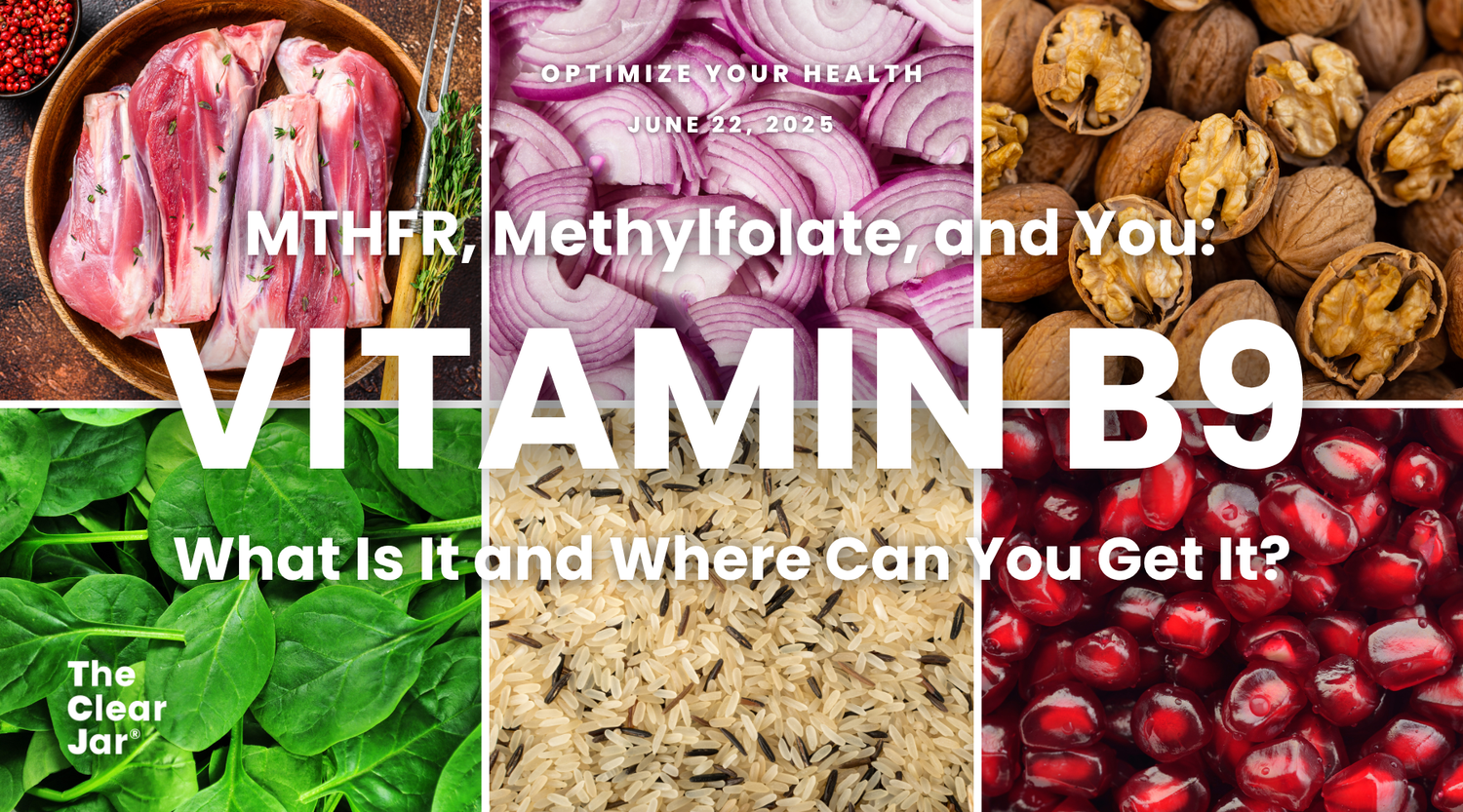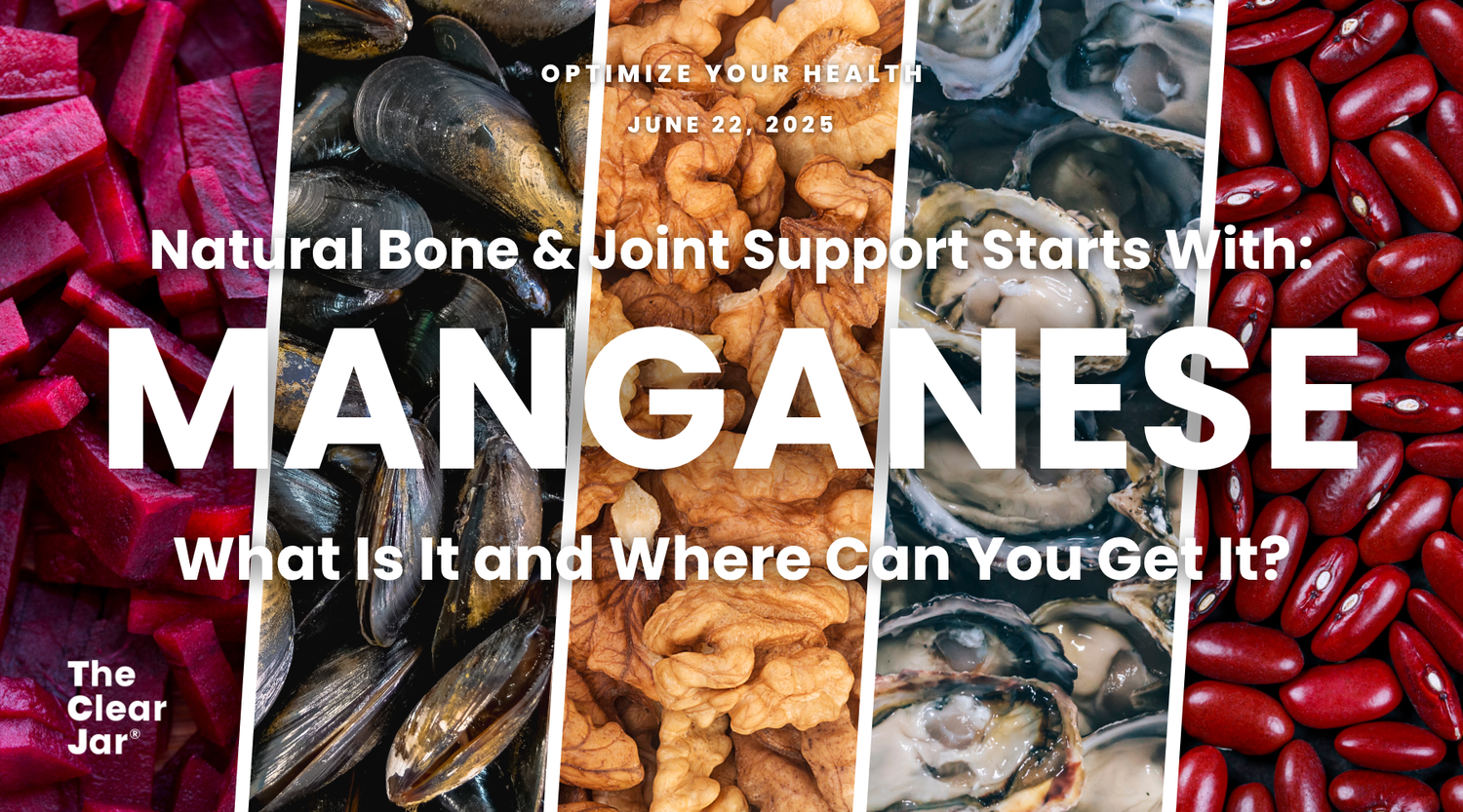Discover what manganese is, why it is critical for bone health, metabolism, and immunity, and gain a deeper understanding about how you can ensure you’re getting enough.
Content Outline
- What is manganese?
- What is the function of manganese in the human body?
- Manganese: Which is the active form?
- Manganese-rich foods
- Manganese recipe: Mango & beetroot salad with walnuts
- Manganese supplements
- Why buy food-born vitamins?
What is manganese?
Manganese is a trace mineral that’s only required by the human body in very small amounts, but it still has crucial roles for maintaining and supporting health. Because your body is unable to make its own supply of manganese, you must get it from the food you eat. Most of the manganese you consume is absorbed in the small intestine and stored in your bones, but small amounts can be found in your brain, liver, pancreas, and kidneys.
What is the function of manganese in the human body?
Manganese supports numerous vital processes in the body, including bone formation, enzyme activation, and nutrient absorption. It’s also important for fighting oxidative stress and inflammation. Including adequate levels of manganese in your daily diet can help prevent issues, such as bone deformities, joint pain, and metabolic issues.
Some of the important roles manganese has include:
-
Bone health: Manganese is involved in the formation of cartilage and collagen, and bone mineralization, modulating the activity of bone-building cells called osteoclasts, and promoting bone remodelling1.
-
Antioxidant properties: Manganese is part of the antioxidant enzyme superoxide dismutase, one of the most important antioxidants in the body that’s responsible for protecting cells from damage caused by free radicals2.
-
Blood clotting: Manganese works with vitamin K to promote wound healing through blood clotting processes3.
-
Carbohydrate digestion: Manganese is important for carbohydrate metabolism, acting as a coenzyme for several enzymes that are involved in breaking down carbohydrates and regulating blood glucose levels4.
-
Brain and nerve function: Manganese is also important for normal brain and nerve function5.
Manganese: Which is the active form?
Manganese is available in several forms. The most common state is Mn(II), but the biologically active form is Mn (III)6. Manganese is absorbed in its ion form, Mn2+, in the small intestine, but less than 5% is absorbed. There are several homeostatic processes that help to keep manganese levels balanced in the body.
Once manganese enters blood circulation, it is quickly removed and transported and taken up by your cells. Its half-life in the blood is anywhere between 10 and 42 days. After this, it is removed from the body in bile and feces7.
Manganese-rich foods
Manganese is found naturally in many foods, including shellfish, nuts, seeds, legumes, and green leafy vegetables. Most people who eat a healthy, balanced diet will get all the manganese they need and support their metabolic processes, bone health, and overall antioxidant defence systems.
Figure 1. Some of the richest manganese foods include beetroot, mussels, oysters, pecans, hazelnuts, brown rice, spinach, pineapple, kidney beans, and black tea.
These foods are not only rich in manganese, but they also provide a variety of other nutrients that contribute to a healthy, balanced diet.
Manganese recipe: Mango & beetroot salad with walnuts
This recipe combines the manganese-richness of beetroot with other nutrient-packed ingredients to create a powerful, flavoursome, and healthy dish. Beetroots are rich in manganese and antioxidants, while walnuts provide an extra top-up as well as omega-3 fatty acids and fiber.
Ingredients:
-
2 medium-sized beetroots, roasted and diced
-
1 ripe mango, peeled and diced
-
30g walnuts, chopped
-
60g mixed salad greens, including spinach
-
15ml olive oil
-
15ml balsamic vinegar
-
Salt and pepper, to taste
-
Optional: crumbled feta or goat cheese for added flavor
Method:
-
Preheat the oven to 200oC. Wrap the beetroots in foil and bake in the oven for about 45 minutes or until they are tender. Allow them to cool before peeling and dicing.
-
Combine the salad leaves, beetroot, and diced mango in a large mixing bowl.
-
Toast the walnuts in a dry pan over a medium heat for a maximum of 3 minutes or until they are fragrant. Then, add them to the salad mix
-
Drizzle olive oil and balsamic vinegar over the salad, then season with salt and pepper.
-
Gently toss everything together and top with cheese, if desired.
Manganese supplements
Manganese supplements are available to buy and can be beneficial for people who are not getting enough manganese from their diet or who have specific health concerns. However, you may need to consult a healthcare professional to make sure you are suitable for supplementation and getting the right dosage to avoid potential toxicity.
Some of the groups who may benefit from manganese supplementation include:
-
Individuals with manganese deficiency: Manganese deficiency is rare, but it can occur in people who have poor diets or malabsorption issues. The signs and symptoms of deficiency haven’t fully been established because it is so rare, but it may cause poor growth, skin rashes, mood changes, and abnormal carbohydrate metabolism8.
-
People at risk of osteoporosis: Some research shows that taking manganese supplements, equivalent to 2.5 to 5mg per day, resulted in less bone loss in postmenopausal women, who are at greater risk of bone fractures and osteoporosis9. Our Food-Born Multivitamin for Women with Iron provides 75% of your daily manganese requirements.
-
Individuals with osteoarthritis: In a study involving 93 people with osteoarthritis, 52% reported improvements in their symptoms after taking a manganese, glucosamine, and chondroitin supplement for 6 months10.
Manganese is often included in multivitamin supplements. It is available in the following forms:
-
Amino acid chelates: these include manganese bisglycinate chelate, manganese glycinate chelate, and manganese aspartate
-
Manganese gluconate: a popular and well-absorbed form that’s commonly found in multivitamins
-
Manganese sulfate: highly bioavailable and effective manganese form that’s used to treat manganese deficiency
-
Manganese citrate: commonly used in supplements and is well tolerated and gentle on the stomach
-
Manganese picolinate: this form is believed to have better absorption and is commonly found in multivitamin supplements because of its effectiveness
-
Manganese ascorbate: a combination of manganese and vitamin C that may enhance the absorption of both nutrients
Which is the best manganese supplement?
When considering which manganese supplements are best for you, there are several factors you’ll need to consider, such as:
-
their form
-
purity and potency
-
whether they are synthetic or natural
It is important to choose a high-quality product that offers manganese in a bioavailable form, which is easily absorbed and utilised by the body. You should also make sure you are following a balanced diet and that you use the supplements to help top up or maintain your manganese levels.
Summary: Why buy food-born vitamins?
Manganese is an essential trace mineral, which means it’s critical for human health but is only required in small amounts. It has vital roles in many physiological processes, including maintaining bone health, metabolism, and antioxidant defense. It also activates enzymes that are crucial for immune function, synthesising collagen and connective tissue, and works with vitamin K to promote wound healing.
Most people will get all the manganese they need from their diet, but supplements are also available. Food-born vitamins and minerals are generally better absorbed by the body than synthetic versions. That’s why at The Clear Jar, we only provide top-quality supplements that have been derived from natural foods.
Written by: Leanne Edermaniger MSc.








